World's first graphene-enhanced

concrete slab poured in England
Unmanned Aerial Vehicle is Based on da Vinci Aerial Screw Design

Crimson Spin, a small, unmanned aerial vehicle (UAV) — flies through the combined lift of four, whirring red spiral-shaped blades. (Image: UMD Design Team)
In the fifteenth century, artist and engineer Leonardo da Vinci envisioned a craft that flew using a single helix-shaped propeller — the aerial screw — viewed by many as the first vertical take-off and landing (VTOL) machine ever designed.
In 2020, the Vertical Flight Society’s (VFS) 37th Annual Student Design Competition challenged students from across the world to reimagine da Vinci’s design. Using modern-day analytical and design tools, students were tasked to design and demonstrate a feasible modern-day VTOL vehicle based on the aerial screw concept and demonstrate the consistency of its physics.
Unveiled at the Vertical Flight Society’s 2022 Transformative Vertical Flight Conference — Crimson Spin, a small, unmanned aerial vehicle (UAV) — flies through the combined lift of four whirring red spiral-shaped blades.
The craft was the culmination of more than two years’ worth of work stemming from UMD’s 2020 winning graduate entry. The prize-winning design, named Elico, derived its name from the Italian root for the words “helicopter,” “propeller,” “helix,” and “screw,” all rooted in Leonardo’s drawing of the aerial screw.
The design did in fact look functional — on paper and in computer simulations — but could it actually fly in reality? “We saw some really interesting behaviors in the lift mechanisms of the air screw in our computational fluid dynamics simulations and models, where we found an edge vortex that would form,” explained team member Ilya Semenov. “But with such a novel design, we couldn’t be 100 percent sure that the phenomenon was true, so creating a working model would help us validate if it was in fact happening.”
Developed as a technology demonstrator, Crimson Spin was designed as a fully autonomous, manned quadrotor vehicle, and improves on da Vinci’s design by using a tapered aerial screw rotor to provide all lift, thrust, and control of the vehicle. A modular framework allows Crimson Spin to adapt to changing mission requirements and has hover and forward flight capabilities. According to the team, it allows riders to experience the genius of Leonardo da Vinci first-hand, safely and easily, by using an all-electric power plant, ultralight composite airframe, and pushbutton operation.
“That first successful flight was an incredible moment,” said team member Austin Prete. “It took three months, just trying to get it to fly correctly.”
While the research and findings are far too preliminary to extract potential applications at this point, making a working model based on the design has been a success in and of itself.
“Just the way the air screw worked was surprising,” added James Sutherland, Ph.D. candidate and team captain of the 2020 design team. “It’s possible that the aerial screw might be less noisy or create less downwash than a regular rotor with the same amount of thrust, but there is still a lot to learn and study before we know where it could be applied.”
Prete added that another interesting finding of the design was that the screws can create the same amount of lift but with fewer rotations compared to a traditional rotor, which may contribute to the reduced downwash — a not insignificant issue when flying traditional rotorcrafts.
Since the technology is so new, the team agrees that characterizing the rotors is important so future work can be done to evaluate the aerial screw against existing rotor styles. That will help them to understand in what flight regimes the screw design might perform best.
“For example, can you make an adjustable rotor screw?” said Prete. “You can make adjustments to a traditional rotor inflight, so what adjustments could you make to an aerial screw mid-flight to change its performance?”
MRI FOR ALL
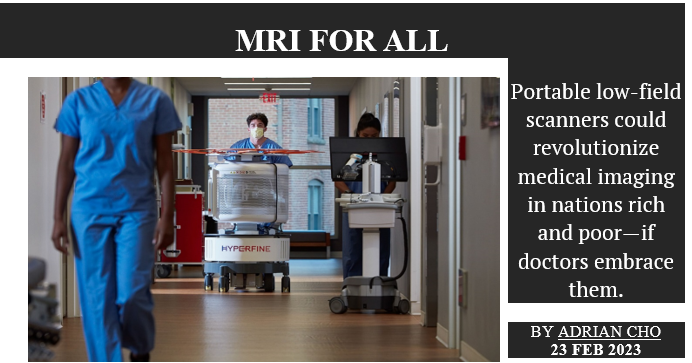
by ADRIAN CHO 23 FEB 2023
Hyperfine’s Swoop, the first U.S. FDA–approved low-field brain scanner, can be
wheeled to a patient’s bedside. DEREK DUDEK/HYPERFINE
The patient, a man in his 70s with a shock of silver hair, lies in the neuro intensive care unit (neuro ICU) at Yale New Haven Hospital. Looking at him, you’d never know that a few days earlier a tumor was removed from his pituitary gland. The operation didn’t leave a mark because, as is standard, surgeons reached the tumor through his nose. He chats cheerfully with a pair of research associates who have come to check his progress with a new and potentially revolutionary device they are testing.
The cylindrical machine stands chest high and could be the brooding older brother of R2D2, the Star Wars robot. One of the researchers carefully guides the 630-kilogram self-propelled scanner up to the head of the bed, steering it with a joystick. Lifting the man by his bed sheet, the researchers help him ease his head into the Swoop—a portable magnetic resonance imaging (MRI) scanner made by a company called Hyperfine.
“Do you want ear plugs?” asks Vineetha Yadlapalli, the second researcher.
“Is it as loud as a regular MRI?”
“Not at all.”
“Then I guess I don’t need them.”
After propping up the patient’s legs to ease the strain on his back, Yadlapalli sets the machine to work, tapping in a few instructions from an iPad. The machine emits a low growl, then proceeds to beep and click. Within minutes, an image of the patient’s brain appears on Yadlapalli’s tablet.
For a half-hour, the man lies quietly, hands folded across his belly. He could be getting his hair set in an old-fashioned hair dryer. In a small way, he’s a pioneer helping take MRI where it’s never gone before.
In many cases, MRI sets the gold standard in medical imaging. The first useful MRI images emerged in the late 1970s. Within a decade, commercial scanners had spread through medicine, enabling physicians to image not just bone, but soft tissues. If doctors suspect you have had a stroke, developed a tumor, or torn cartilage in your knee, they’ll likely prescribe an MRI.
If you’re fortunate enough to be able to get one, that is. An MRI scanner employs a magnetic field to twirl atomic nuclei in living tissue—specifically the protons at the heart of hydrogen atoms—so that they emit radio waves. To generate the field, a standard scanner employs a large, powerful superconducting electromagnet that pushes a machine’s cost to $1.5 million or more, pricing MRI out of reach of 70% of the world’s population. Even in the United States, getting an MRI may require days of waiting and a midnight drive to some distant hospital. The patient must come to the scanner, not the other way around.
For years, some researchers have been striving to build scanners that use much smaller permanent magnets, made of the alloy often found in desk toys. They produce fields roughly 1/25th as strong as a standard MRI magnet, which once would have been far too weak to glean a usable image. But, thanks to better electronics, more efficient data collection, and new signal processing techniques, multiple groups have imaged the brain in such low fields—albeit with lower resolution than standard MRI. The result is scanners small enough to roll to a patient’s bed and possibly cheap enough to make MRI accessible across the globe.

The resolution of a brain scan from a low-field machine (first image) is coarser than conventional MRI (second image), but both images clearly reveal a hemorrhage. YALE SCHOOL OF MEDICINE
The machines mark a technological triumph. Kathryn Keenan, a biomedical engineer at the National Institute of Standards and Technology who is testing a Hyperfine scanner, says, “Everyone that comes through is super impressed that it even works.” Some say the scanners could also transform medical imaging. “We’re potentially opening up a whole new field,” says Kevin Sheth, a neurologist at the Yale School of Medicine who has worked extensively with the Swoop but has no financial interest in Hyperfine. “It’s not a question of ‘Is this going to happen?’ It’s going to be a thing.”
In August 2020, the Swoop became the first low-field scanner to win U.S. Food and Drug Administration (FDA) approval to image the brain, and physicians are putting it through clinical studies at Yale New Haven and elsewhere. Other devices are close behind. But Andrew McDowell, a physicist and founder of the consulting firm NeuvoMR, LLC, cautions it’s not clear there’s a market for a low-field scanner, with its lower resolution. “The real challenge is going to be convincing doctors to start using it,” he says. “That’s very difficult because for good reasons they’re very conservative.”
AN MRI SCANNER WORKS nothing like a camera; it is actually a radio that tunes in to protons in living tissue. Like a tiny compass needle, each proton is magnetic, and ordinarily the protons point randomly in all directions (see graphic, below). However, an external magnetic field can align them. At that point, a pulse of radio waves of the right frequency and duration can tip them by 90°. The aligned protons then twirl like gyroscopes, emitting a radio signal of their own, whose frequency increases with the field’s strength.
That fleeting monotone radio hum reveals little. To create an image, the scanner must distinguish among waves coming from different points in the body. To do this, it sculpts the magnetic field, which makes protons at different locations sing at different frequencies and states of synchrony. The scanner must also distinguish one type of tissue from another, which it does by exploiting the fact that the radio signals fade at different rates in different tissues.
One reason the signal dies out is that the protons knock one another out of alignment through their own magnetic fields. The rate at which this happens differs between, say, fatty brain matter and watery cerebrospinal fluid. To measure the rate, the scanner applies pairs of pulses. The first pulse creates a signal that fades as the orientations of twirling protons fan out. The second reverses much of that evolution, eliciting an echo of the signal. The proton-proton interactions mute that echo, however. So the scanner can measure their rate by tracking how the echo shrinks as the delay between the two pulses increases.
While applying pair after pair of pulses, the scanner must simultaneously sort the echoes coming from different points in the brain. To do that, it relies on magnetic field gradients applied at key moments. For example, a gradient applied during the echo from chin to crown makes protons in different sideways slices through the head radiate at different frequencies. A gradient applied between pulses and across the head will set protons in vertical slices ahead or behind in their twirling, a “phase” difference that makes echoes from some slices reinforce one another and others cancel. By varying the gradient, the scanner can deduce the strength of the echo from each slice.
Over many repetitions, the scanner gathers a plethora of echoes in which intensity varies with delay, frequency, and phase. A standard mathematical algorithm decodes them to produce a map of how the proton-proton interactions vary throughout the brain, forming one type of MRI image. Other pulse sequences probe other tissue-specific processes—such as how fast protons diffuse, which can track fluid flow.
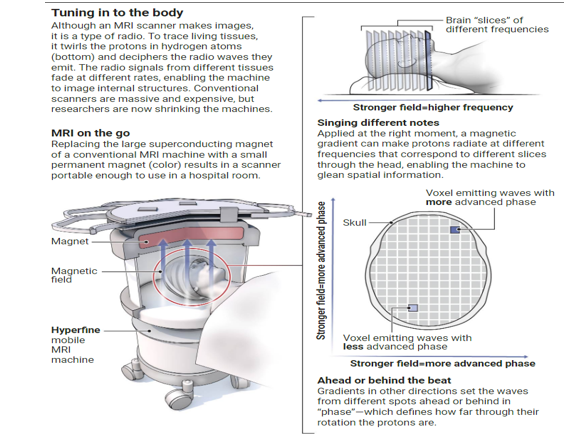
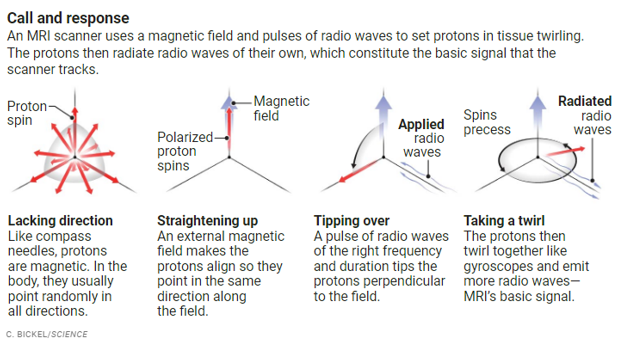
All that pulsing explains why MRI scans take time and why an MRI machine chirps, clicks, and buzzes. Those sounds emerge as mechanical stresses rattle the current-carrying coils that create the magnetic gradients. A technician can tell what kind of a scan a machine is doing just from those sounds, Yadlapalli says.
A stronger field makes all this easier by polarizing the protons more thoroughly and creating a bigger signal. A standard scanner’s magnet produces a field of 1.5 tesla—30,000 times as strong as Earth’s field—and some reach 3 or 7 tesla. Even so, the protons pointing along a 1.5-tesla field outnumber those pointing the other way by just 0.001%. Reduce the field strength by a factor of 25 and the polarization falls with it. The signal-to-noise ratio plummets even more, by a factor of nearly 300.
In principle, a low-field scanner could coax a signal from the noise by taking data over a longer time period—just as radio astronomers sift a weak signal from noise by training their dishes on a star for hours or days. That tack won’t work with a human, who can hold still only so long. So, in developing low-field MRI, researchers had to find ways to extract data much faster.
One key element is better hardware, says Joshua Harper, a neural engineer at the German Paraguayan University. “We now have really fast, really cheap electronics,” he says. “That’s really why it works.” Even so, doing low-field MRI in a hospital room is tricky. Metal in other machines and even the walls can distort the field, and static from other devices can disrupt the radio signal. So, scanners employ countermeasures. For example, Hyperfine’ s Swoop uses antennas to measure radio noise and cancel it, similar to how noise-canceling headphones block sound.
The new scanners also turn an aspect of the lower field to their advantage to run faster. To manipulate the protons, a high-field scanner must use higher frequency, higher energy radio waves, so it can pulse only so fast before it begins to heat the patient. Free of that speed limit, a low-field scanner can pulse faster and use more efficient pulse sequences, says Matthew Rosen of Massachusetts General Hospital, a physicist who co-founded Hyperfine. “We can interrogate very, very rapidly, doing things that you could never do at high field.”
Even so, gathering data fast enough for standard image reconstruction remains a challenge. One solution is to employ novel signal processing techniques, including artificial intelligence. Hyperfine engineers use a set of training images to teach a program called a neural network to construct brain images from relatively sparse data, says Khan Siddiqui, Hyperfine’ s chief medical officer and chief strategy officer. “That’s where our secret sauce comes in.”
Compared with a standard scan, a low-field image looks blurrier. Still, physicists see its beauty. “It’s this incredible physics success story,” Rosen says. “It’s not just we pointy headed physicists [goofing] off and doing stuff that nobody cares about.” The technology vindicates those toiling in a forgotten corner of the field, McDowell says. “Who in their right mind would build a 65-millitesla machine when the glory is in building the 11-tesla one?”
HYPERFINE SAYS ITS SWOOP SCANNER is off to a pretty glorious start. It has sold more than 100 of the machines, mostly in the United States, at about $250,000 apiece. The goal is not to replace high-field scanners, but to expand how MRI is used, Siddiqui says. “Our portable scanner brings MRI closer to the patient, both in time and in distance.” Hyperfine envisions using it in the neuro ICU to quickly assess patients too ill or unstable to wheel to a conventional MRI or a CT machine, which produces a type of 3D x-ray.
A Swoop’s magnet consists of two disks and produces a field of 64 millitesla. A scan from it feels dramatically different from a standard scan. In a conventional scanner, an automated table glides you bodily into the cylindrical magnet. With the Swoop, an able patient can scooch into the magnet as if wriggling under a car’s bumper. A helmetlike head piece containing the antennas cradles your head so snugly it may touch your nose, yet your arms and legs are free. The machine’s chirping is soft, even soothing.
In late 2019 and early 2020, as the coronavirus pandemic took hold, Sheth and colleagues tested the Swoop’s promise by scanning 50 ICU patients, including 20 with COVID-19. Because many were on ventilators and sedated, “we had no idea what their neurological status was and no way to take a look by any available imaging modality,” Sheth recalls. “And this provided us a way to do that at the bedside.” The scans revealed brain trauma in 37 cases, including eight COVID-19 patients, the researchers reported in January 2021 in JAMA Neurology.
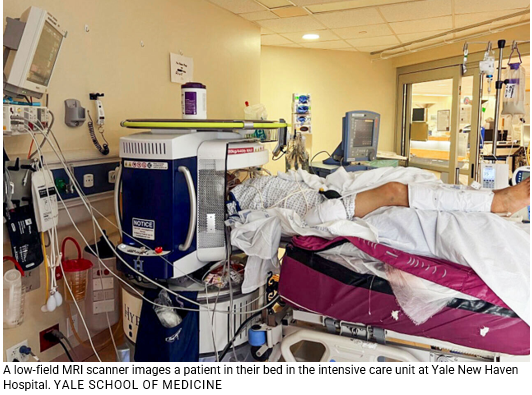
A low-field MRI scanner images a patient in their bed in the intensive care unit at Yale New Haven
Hospital. YALE SCHOOL OF MEDICINE
The cheaper, smaller machines might also allow patients to get more frequent follow-up scans. That’s a prospect that resonates with Ronald Walsworth, a physicist at the University of Maryland, College Park, and co-founder of Hyperfine. In 2007, his then–2-year-old son developed a noncancerous brain tumor. He was treated successfully, says Walsworth, who serves on Hyperfine’s advisory board. Still, he says, “There were signs that were not caught early and things that were not decided most efficiently because the MRIs only could happen once in a while.”
The Swoop’s advantages have won it fans. “Oh, my God, what a beautiful, beautiful piece of technology,” says Steven Schiff, a pediatric neurosurgeon at Yale University who has no financial interest in Hyperfine. Still, the Swoop can miss details a high-field scanner would catch because its resolution of 1.5 millimeters is half that of a standard scanner. For example, Sheth’s team used it to image the brains of 50 patients who had had an ischemic stroke, visible with standard MRI. The Swoop missed the five smallest, millimeter-size strokes, the researchers reported in April 2022 in Science Advances.
That finding shows physicians will have to exercise judgment in deciding when to use each type of scanner, Sheth says. “You shouldn’t be too worried, but you should understand the context in which you might miss something,” he says. Still, McDowell notes doctors may shy away from a low-field scanner if they think using it could leave them open to a malpractice suit.
IN MUCH OF THE WORLD, MRI is simply unavailable. A team in the Netherlands hopes its scanner will change that. Its magnet differs dramatically from the Swoop’s. It consists of 4098 cubes of neodymium iron boron—an alloy developed in the 1980s by carmakers—embedded in a hollow plastic cylinder, and arranged in a configuration called a Halbach array to produce a uniform horizontal field. “Our system is intrinsically better and has fewer distortions,” asserts Andrew Webb, an MRI physicist at Leiden University Medical Centre, so it requires less help from processing such as machine learning.
A private company, Multiwave Technologies in Switzerland, is trying to bring the scanner to market. It will apply for FDA approval this year and aims to rent its machines in a subscription model, says Tryfon Antonakakis, Multiwave’s co-CEO. “Our goal is to make it as affordable as possible and not necessarily to be in the hospital,” says Antonakakis, an engineer and applied mathematician. “We are looking to go into the mountains, into the medical deserts in developing countries.”
Webb and his colleagues, including Martin van Gijzen, an applied mathematician at the Delft University of Technology, have another plan for spreading their technology: giving it away. “We made the decision—Martin, myself, all our team—that we were not going to patent things,” Webb says. “Everything is going to be open source,” so that anyone can download their design from the internet and build scanners. Webb and colleagues hope entrepreneurs in developing nations will manufacture them locally.
To seed the idea, they shipped a scanner, packaged as a kit, to Johnes Obungoloch, a biomedical engineer at Mbarara University of Science and Technology in Uganda, who was a graduate student at Pennsylvania State University, University Park, when Webb and Schiff were also there. In September 2022, Webb and others flew to Uganda to help Obungoloch and his team assemble the scanner in 11 days.
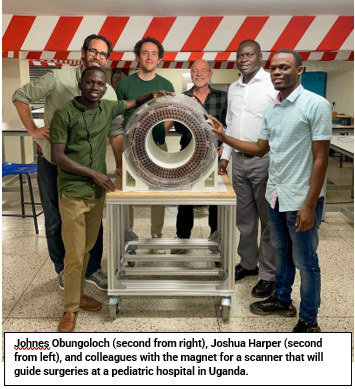
Soon it will be put to use in a project to test the utility of low-field MRI in the developing world. The CURE Children’s Hospital of Uganda, a 55-bed pediatric neurosurgical facility in Mbale run by an international nonprofit, plans to compare Obugoloch’s scanner, a Swoop, and a CT scanner. Doctors will image children with hydrocephalus, in which cerebrospinal fluid collects in the brain and compresses it, potentially causing debilitating or fatal damage. Globally, hydrocephalus afflicts 400,000 children every year, and it accounts for 75% of the CURE hospital’s patients. In Africa, an infection is the usual cause..For years, Schiff and colleagues at the hospital have used CT scans to guide an innovative surgery that allows the fluid to drain into the brain’s ventricles—an alternative to installing a shunt to the abdomen. However, a CT scan exposes children to considerable x-ray radiation, so CURE doctors will see whether low-field MRI images can guide surgeons. “If the MRI proves comparable to the CT scan, then there is no reason why we should be using the CT scan anymore,” says Ronald Mulondo, a physician at CURE who directs the project.
The study is awaiting final governmental approval. If it’s successful, Obungoloch envisions building more scanners, perhaps for Africa’s six other CURE hospitals, and even sourcing some of the parts locally. Uganda has public health care, so that vision depends on government funding, he says.
Still, like their peers elsewhere, doctors in Uganda may have reservations about the technique’s limited resolution, Obungoloch notes. “The radiologists see it and say, ‘Well, this is a crappy image, and we don’t care how long it took you to acquire it.’” Government officials may also think Ugandans shouldn’t have to settle for lower resolution imaging, no matter how useful, he says.
In truth, developers of low-field MRI are pushing for nothing less than a rethink of medical imaging. “Is the best technology the scanner that can provide the highest quality images or is it the scanner that can lead to the most improved patient outcomes?” asks Harper, who collaborated on Webb’s open-source rig and hopes to acquire a Swoop.
What will win over doctors, Sheth says, will be a “use case”—a killer app for the scanners. For example, they might be put into special ambulances for stroke care. He questions whether Hyperfine and others have found that use case but predicts it will come.
file:///C:/Users/Owner/AppData/Local/Temp/msohtmlclip1/01/clip_image017.jpg" alt="Adrian Cho" width="86" height="120" />Then there are patients to win over. After his time in the Hyperfine scanner, the pituitary tumor patient confides to Yadlapalli that it wasn’t quite as comfortable as a regular MRI. Noting that he still can’t breathe through his nose because of the surgery, he says the snug-fitting head basket bothered him. “I’d rather be scooted over to a real MRI.” Call him a reluctant pioneer.
ABOUT THE AUTHOR
Adrian Cho, Author, Staff Writer
TRIZ Notes: This new MRI system has been reduced in size, weight, do it in reverse and convenient to use. The system is more IDEAL and will continue to evolve closer to the IFR. Just needs a few more “S” curves.
Innovation for Urgency:
Understanding the Different Types of Innovations
by admin | Mar 10, 2023 |Innovation
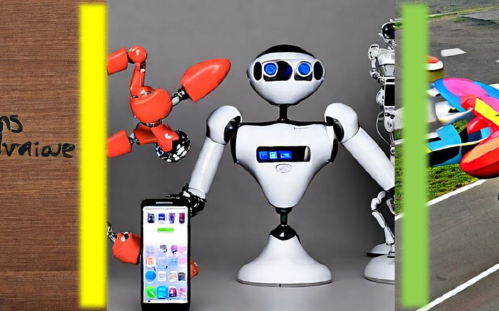
IntroductionInnovation is a key driver of progress and success in any industry. However, not all innovations are created equal. Innovation can be classified in terms of impact or urgency. Impact-driven innovation is motivated by the desire to make more financial profits; impact is not necessarily seen as an impact for a better world. Urgency-driven innovation is driven by the need to address a problem that has pressing aspects on human quality of life; here impact is seen from the perspective of quality of life in general, including the positive impact on flora and fauna. Both types of innovation are essential for different industries and situations. Some innovations focus on addressing progress and superior performance, while others are designed to stop or control negative effects. Additionally, some innovations go beyond control and aim to eliminate problems altogether. In this post, we will explore the different types of innovations and their impact on industries.
Classification based on urgency for quality of lifeClassification based on urgency for quality of life
One type of innovation is the “vitamin” type. This innovation focuses on addressing progress and superior performance. It involves creating products or services that improve an existing process or provide a better experience for the user. This type of innovation is essential for industries that want to stay competitive and continue to grow. Examples of vitamin-type innovations include smartphones, high-performance vehicles, and advanced medical equipment.Some more examples in this category are:
• The introduction of smartphones with new features, such as higher resolution cameras and more powerful processors, improves the performance of previous models.
• The introduction of smartphones with new features, such as higher resolution cameras and more powerful processors, improves the performance of previous models.
• The development of new materials, such as graphene, that offer improved mechanical and electrical properties compared to traditional materials.
• The creation of more efficient solar cells that generate more electricity per unit area.
• Apple’s Air Pods Pro with noise-canceling technology enhances the user experience.
• Tesla’s electric cars offer superior performance compared to traditional combustion engine cars (YES! It is only a vitamin-type innovation. Why? Please, have a look here)
• Google’s search algorithm updates improve the accuracy and relevance of search results.
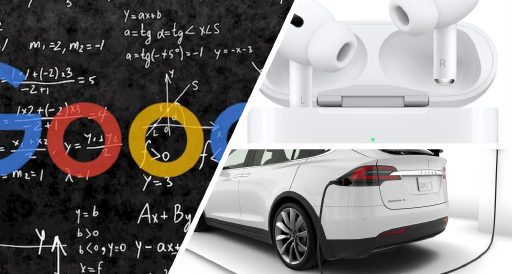
Another type of innovation is the “analgesic” type. This innovation focuses on stopping or keeping some negative effects under control. It involves creating products or services that address a problem or limitation of an existing product. This type of innovation is crucial for industries that want to prevent negative effects from impacting their business. Examples of analgesic-type innovations include cybersecurity software, pollution control systems, and safety equipment.
Examples in this category are also the followings:
• The development of vaccines and treatments for diseases, such as the COVID-19 vaccines, that help to mitigate the negative effects of the illness.
• The introduction of filters in cigarettes to reduce the amount of harmful chemicals that are released when smoking.
• The use of pollution control devices in factories to reduce the amount of harmful emissions released into the environment.
• Robots that collect waste from lakes and rivers to reduce the amount of harmful effects on environment.
• Robots that collect waste from lakes and rivers to reduce the amount of harmful effects on environment.
• Lifting car-parking that can park 20 cars on the surface covered by 3 cars.
• Water filters that remove harmful contaminants from drinking water, keeping people healthy and safe.
• Noise-cancelling headphones that reduce stress and fatigue caused by loud noises.
• Apps that limit screen time to help prevent digital addiction and associated negative effects.
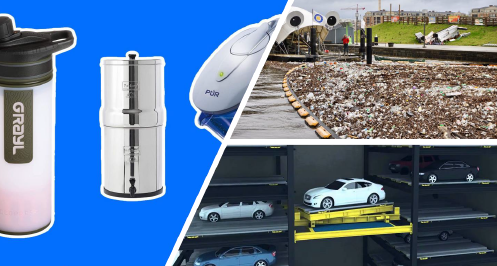
The “antibiotic” type of innovation takes things to the next level. This type of innovation aims to eliminate problems or negative effects altogether. It involves creating products or services that fundamentally change the way things are done, often creating entirely new industries. This type of innovation is essential for industries that want to stay ahead of the curve and address major problems in a game-changing way. Examples of antibiotic-type innovations include renewable energy sources, autonomous vehicles, and artificial intelligence.The “antibiotic” type of innovation takes things to the next level. This type of innovation aims to eliminate problems or negative effects altogether. It involves creating products or services that fundamentally change the way things are done, often creating entirely new industries. This type of innovation is essential for industries that want to stay ahead of the curve and address major problems in a game-changing way. Examples of antibiotic-type innovations include renewable energy sources, autonomous vehicles, and artificial intelligence.Examples we can add here are also:
• The development of antibiotics to treat bacterial infections, which have helped to reduce mortality rates from infectious diseases.
• The introduction of water treatment technologies, such as chlorination and filtration, that have helped to eliminate waterborne diseases in developed countries.
• The creation of renewable energy sources, such as wind and solar power, that help to eliminate reliance on fossil fuels and reduce carbon emissions.
• Recycling technology that can convert waste materials into usable products is an “antibiotic” type innovation in the waste management industry. It aims to eliminate the negative effects of waste, including environmental pollution and resource depletion.
• Tesla Powerwall – addresses the elimination of energy problems by providing an efficient and sustainable energy storage solution for households and businesses.
• Zero Waste manufacturing – addresses the elimination of waste problems by designing manufacturing processes that eliminate waste, increase efficiency, and reduce environmental impact.
• Automated Inventory Management Systems – addresses the elimination of inventory problems by using sensors, machine learning, and analytics to optimize inventory levels, reduce waste, and improve supply chain efficiency.
• Carbon Capture Technology – addresses the elimination of carbon emissions by capturing and storing carbon dioxide emissions from industrial processes before they are released into the atmosphere.

All three categories of innovations have the potential to be of interest to investors, depending on the specific context and industry.All three categories of innovations have the potential to be of interest to investors, depending on the specific context and industry.
Vitamin-type innovations, which focus on progress and superior performance, may be particularly appealing to investors looking for growth opportunities and high returns on investment.
Analgesic-type innovations, which address negative effects or problems that already exist, may also be attractive to investors if they offer cost savings or other benefits to customers.
Antibiotic-type innovations, which aim to eliminate problems or negative effects, may be less immediately attractive to investors because they often require significant investment and may take longer to generate returns. However, these types of innovations may be more valuable in the long term as they can create new markets or disrupt existing ones and may also have more significant social and environmental impacts.
Conclusions
Understanding the different types of innovations and their potential impact can help individuals and organizations prioritize their efforts and investments. While all types of innovations have value, it is important to recognize that analgesic and antibiotic innovations have a significant impact on society and can offer attractive investment opportunities. These types of innovations may not receive the same level of attention as vitamin-type innovations because of much higher research and development risks, but they can provide more stable and predictable returns on investment over the long term. Usually in hackathons we see vitamin-type innovations, which are not necessarily the stringent ones for humankind. We must address this issue and find new models to support ideation and development around analgesic and antibiotic-types of innovations. It is worth considering how these different types of innovations are addressed in different industries and sectors. Furthermore, it is important to consider the potential trade-offs and unintended consequences of each type of innovation. For example, an impact-driven innovation may generate significant financial returns, but it may also have negative societal or environmental impacts. Similarly, an analgesic-type innovation or even an antibiotic-type innovation may solve a particular problem, but it may also create new problems or unintended consequences. So, we have to analyze any type of innovation in a holistic way and from multiple angles, over their life-cycles, over the supply and value chains, etc.Innovation is a complex and multifaceted process, and there is no one-size-fits-all approach to addressing the challenges and opportunities that it presents. By understanding the different types of innovations and their potential impact, individuals and organizations can make more informed decisions about where to focus their efforts and investments, and how to balance short-term and long-term goals.
—————
Credits: Stelian Brad
Keeping Drivers Safe with a Road That Can Melt Snow, Ice on Its Own
The researchers prepared a sodium acetate salt and combined it with a surfactant, silicon dioxide, sodium bicarbonate and blast furnace slag.
American Chemical Society Feb 17, 2023

Adapted from ACS Omega 2023, DOI: 10.1021/acsomega.2c07212
Slipping and sliding on snowy or icy roads is dangerous. Salt and sand help melt ice or provide traction, but excessive use is bad for the environment. And sometimes, a surprise storm can blow through before these materials can be applied. Now, researchers reporting in ACS Omega have filled microcapsules with a chloride-free salt mixture that’s added into asphalt before roads are paved, providing long-term snow melting capabilities in a real-world test.
Driving on snowy roads at or near-freezing temperatures can create unsafe conditions, forming nearly invisible, slick black ice, if roads aren’t cleaned quickly enough. But the most common ways to keep roads clear have significant downsides:
Recently, researchers have incorporated salt-storage systems into “anti-icing asphalt” to remove snow and prevent black ice from forming. However, these asphalt pavements use corrosive chloride-based salts and only release snow-melting substances for a few years. So, Yarong Peng, Quansheng Zhao, Xiaomeng Chu and colleagues wanted to develop a longer-term, chloride-free additive to effectively melt and remove snow cover on winter roads.
The researchers prepared a sodium acetate salt and combined it with a surfactant, silicon dioxide, sodium bicarbonate and blast furnace slag — a waste product from power plant operations — to produce a fine powder. They then coated the particles in the powder with a polymer solution, forming tiny microcapsules. Next, the team replaced some of the mineral filler in an asphalt mixture with the microcapsules.
In initial experiments, a pavement block made with the new additive lowered the freezing point of water to -6 F. And the researchers estimated that a 5-cm-thick layer of the anti-icing asphalt would be effective at melting snow for seven to eight years. A real-world pilot test of the anti-icing asphalt on the off-ramp of a highway showed that it melted snow that fell on the road, whereas traditional pavement required additional removal operations. Because the additive used waste products and could release salt for most of a road’s lifetime, the researchers say that is a practical and economic solution for wintertime snow and ice removal.
TRIZ: Slippery, icy roads are dangerous to drive on. The Ideal Final Result concept tells us that the system should fix itself using resources that are readily available and free/low cost. The main component of the road system is the road, more accurately, the black top. The road surface should be able to melt/remove snow and ice. By merging (Prin #5) a low cost additive to the black top, we should be able to provide an environment where the road itself will melt the snow and ice.
Engineers Grow “perfect” atom-thin Materials on
Industrial Silicon Wafers
Their technique could allow chip manufacturers to produce next-generation transistors based on materials other than silicon.
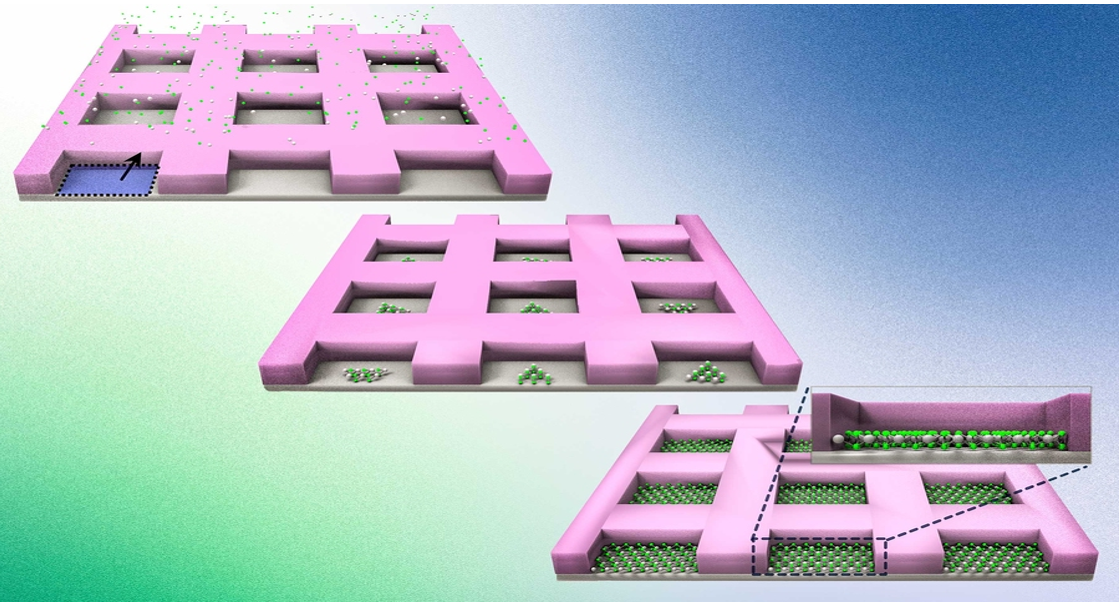
MIT engineers grow “perfect” atom-thin materials on industrial silicon wafers. Their technique could allow chip manufacturers to produce next-generation transistors based on materials other than silicon.
Jennifer Chu | MIT News Office Publication Date: January 18, 2023
Caption: By depositing atoms on a wafer coated in a “mask” (top left), MIT engineers can corral the atoms in the mask’s individual pockets (center middle), and encourage the atoms to grow into perfect, 2D, single-crystalline layers (bottom right).
Credits: Courtesy of the researchers. Edited by MIT News.
Engineers grow defect-free, atomically thin films on top of silicon wafers; new method may allow computer chipmakers to produce 2D transistors for electronics.
True to Moore’s Law, the number of transistors on a microchip has doubled every year since the 1960s. But this trajectory is predicted to soon plateau because silicon — the backbone of modern transistors — loses its electrical properties once devices made from this material dip below a certain size.
Enter 2D materials — delicate, two-dimensional sheets of perfect crystals that are as thin as a single atom. At the scale of nanometers, 2D materials can conduct electrons far more efficiently than silicon. The search for next-generation transistor materials therefore has focused on 2D materials as potential successors to silicon.
But before the electronics industry can transition to 2D materials, scientists have to first find a way to engineer the materials on industry-standard silicon wafers while preserving their perfect crystalline form. And MIT engineers may now have a solution.
The team has developed a method that could enable chip manufacturers to fabricate ever-smaller transistors from 2D materials by growing them on existing wafers of silicon and other materials. The new method is a form of “nonepitaxial, single-crystalline growth,” which the team used for the first time to grow pure, defect-free 2D materials onto industrial silicon wafers.
With their method, the team fabricated a simple functional transistor from a type of 2D materials called transition-metal dichalcogenides, or TMDs, which are known to conduct electricity better than silicon at nanometer scales.
“We expect our technology could enable the development of 2D semiconductor-based, high-performance, next-generation electronic devices,” says Jeehwan Kim, associate professor of mechanical engineering at MIT. “We’ve unlocked a way to catch up to Moore’s Law using 2D materials.”
Kim and his colleagues detail their method in a paper appearing today in Nature. The study’s MIT co-authors include Ki Seok Kim, Doyoon Lee, Celesta Chang, Seunghwan Seo, Hyunseok Kim, Jiho Shin, Sangho Lee, Jun Min Suh, and Bo-In Park, along with collaborators at the University of Texas at Dallas, the University of California at Riverside, Washington University in Saint Louis, and institutions across South Korea.
A crystal patchwork
To produce a 2D material, researchers have typically employed a manual process by which an atom-thin flake is carefully exfoliated from a bulk material, like peeling away the layers of an onion.
But most bulk materials are polycrystalline, containing multiple crystals that grow in random orientations. Where one crystal meets another, the “grain boundary” acts as an electric barrier. Any electrons flowing through one crystal suddenly stop when met with a crystal of a different orientation, damping a material’s conductivity. Even after exfoliating a 2D flake, researchers must then search the flake for “single-crystalline” regions — a tedious and time-intensive process that is difficult to apply at industrial scales.
Recently, researchers have found other ways to fabricate 2D materials, by growing them on wafers of sapphire — a material with a hexagonal pattern of atoms which encourages 2D materials to assemble in the same, single-crystalline orientation.
“But nobody uses sapphire in the memory or logic industry,” Kim says. “All the infrastructure is based on silicon. For semiconductor processing, you need to use silicon wafers.”
However, wafers of silicon lack sapphire’s hexagonal supporting scaffold. When researchers attempt to grow 2D materials on silicon, the result is a random patchwork of crystals that merge haphazardly, forming numerous grain boundaries that stymie conductivity. “It’s considered almost impossible to grow single-crystalline 2D materials on silicon,” Kim says. “Now we show you can. And our trick is to prevent the formation of grain boundaries.”
Seed pockets
The team’s new “nonepitaxial, single-crystalline growth” does not require peeling and searching flakes of 2D material. Instead, the researchers use conventional vapor deposition methods to pump atoms across a silicon wafer. The atoms eventually settle on the wafer and nucleate, growing into two-dimensional crystal orientations. If left alone each “nucleus,” or seed of a crystal, would grow in random orientations across the silicon wafer. But Kim and his colleagues found a way to align each growing crystal to create single-crystalline regions across the entire wafer.
To do so, they first covered a silicon wafer in a “mask” — a coating of silicon dioxide that they patterned into tiny pockets, each designed to trap a crystal seed. Across the masked wafer, they then flowed a gas of atoms that settled into each pocket to form a 2D material — in this case, a TMD. The mask’s pockets corralled the atoms and encouraged them to assemble on the silicon wafer in the same, single-crystalline orientation.
“That is a very shocking result,” Kim says, “You have single-crystalline growth everywhere, even if there is no epitaxial relation between the 2D material and silicon wafer.” With their masking method, the team fabricated a simple TMD transistor and showed that its electrical performance was just as good as a pure flake of the same material.
They also applied the method to engineer a multilayered device. After covering a silicon wafer with a patterned mask, they grew one type of 2D material to fill half of each square, then grew a second type of 2D material over the first layer to fill the rest of the squares. The result was an ultrathin, single-crystalline bilayer structure within each square. Kim says that going forward, multiple 2D materials could be grown and stacked together in this way to make ultrathin, flexible, and multifunctional films.
“Until now, there has been no way of making 2D materials in single-crystalline form on silicon wafers, thus the whole community has been struggling to realize next-generation processors without transferring 2D materials,” Kim says. “Now we have completely solved this problem, with a way to make devices smaller than a few nanometers. This will change the paradigm of Moore’s Law.”
This research was supported in part by the U.S. Defense Advanced Research Projects Agency, Intel, the IARPA MicroE4AI program, MicroLink Devices, Inc., ROHM Co., and Samsung.
TRIZ Applications: Follow Lines of Evolution, system should get larger or smaller. Principles of using a mediator and thin films. What other TRIZ tools do you find in the paper?
Exploring the Effectiveness of Inventive Principles of TRIZ on Developing researchers’ innovative capabilities: a case study in an innovative Research Center
Mostafa Jafari, Peyman Akhavan, Hamaid R. Zarghami, and Naser Asgari
Department of Industrial Engineering, Iran University of Science and Technology, Tehran, Iran
Abstract
Purpose – The purpose of this paper is to explore the efficacy of 40 inventive principles of TRIZ for developing researchers’ innovative capabilities and to evaluate the extent of application of “40 inventive principles” by inventors In Research Center of Intelligent and Signal Processing (A Successful research center that is producing new products in the field of signal processing and medical engineering).
Design/methodology/approach
– A range of relevant literature is explored initially. A questionnaire about 40 inventive principles of TRIZ was developed based on literature review.
Finally, a data analysis including descriptive statistics, correlation and regression analysis was designed by using SPSS software.
Findings –
The results showed that about 71% of the researchers have employed TRIZ above the average in their innovative products. Also these studied researchers used TRIZ principles unintentionally. Therefore, if this research center and similar institutes want to make full use of their Researchers’ abilities, they can facilitate innovation through offering courses on TRIZ, the principles of TRIZ and its other tools to them.
Research limitations/implications
– This research explore the using of 40 inventive principles as TRIZ simplest tools in an innovative research center without information of TRIZ field. It may need further research to be exploring through other tools of TRIZ and repeat this work in organizations using TRIZ with information from it. Although all of selected researchers were inventor and elite in their fields but a limitation of this research is exploring one successful research center and it can be done in a spread area in all of industries for generalized results. It is needed to note this research is a start for evaluate of using from TRIZ principles and continuing this work was needed through other researchers in all of field and organizations in all of countries.
Originality/value
– This study is probably the first to provide an exploring of TRIZ inventive principles applications through a research center. Using finding of this research, this research center and other similar research organizations interested in implementing innovative problem-solving techniques will be more familiar with some benefits of TRIZ implementation in innovative accelerate for innovative problem solving in today’s complex competitive environment.
This research is somewhat different from previous works and the way of doing this research is unique in the world.
We explore efficacy of TRIZ inventive principles on researchers’ innovative capabilities through unintentional and intentional using from TRIZ principles by researchers of a successful inventor research center which have powerful researchers at field of signal processing. It is needed to note this research is a start for evaluate of using from TRIZ principles and continuing this work was needed through other researchers in all of field and organizations.
Keywords: Systematic innovation, TRIZ, 40 inventive principles, Researchers’ innovative capabilities, NPD.
The present research has been conducted in order to assess the usage and efficacy of the 40 inventive principles of TRIZ for developing researchers’ innovative capabilities. In other words, it was done to find out whether the principles formulated by Altshuller through an analysis of inventions in the past, are used by contemporary inventor researchers who are not familiar with TRIZ in our case, and whether explaining these principles can result in enhancing the ability of researchers to use existing knowledge more efficiently. In fact, contemporary researchers and those who lived before Altshuller have this in common, that they all had no understanding of TRIZ. We have made an effort to show how much the researchers in the Research Center of Intelligent Signal Processing, as a successful producer of inventive products, use the principles of TRIZ? The results showed that about 71% of the researchers have employed TRIZ above the average and the main hypothesis (H1) of the research was confirmed with confidence level of 95%. It means most researchers used TRIZ principles more than the average number. A considerable finding was that all 41 people who were selected from a population of 50 researchers said they didn’t know anything about TRIZ. It means the researchers used TRIZ principles unintentionally. Considering that the research center is an organization with lots of laboratories along with hardware and software facilities that help develop medical equipment and produce software for processing life indicators, probably the results achieved from this research center could be generalized to a wider population and to similar institutes. We could conclude that if this research center and similar institutes want to make full use of their researchers’ abilities, they should facilitate innovation through offering courses on systematic innovation, such as the principles of TRIZ to their employees; thanks to the researchers conducted by Altshuller, his students, and other scholars, TRIZ has already provided us with required tools. Exploring all innovative aspects of TRIZ needs a period of time as long as its existence. In addition, a trial-and-error approach to innovation is neither scientifically nor economically in the 3rd millennium. So, we can conclude that TRIZ could be applied for improving researchers’ capabilities. So, it would be good ideas to introduce TRIZ to knowledge-workers and researchers in research organizations in order to use its potential for developing their innovative practices. This research also shows that the priority given to each principle varies among researchers (see, table 5). This result supported previous findings in ranking principles about different ranking of principle in different fields (Mann, 2004a; Mann, 2004b). It was revealed that there is a positive and significant correlation between “using TRIZ principles” and “making use of previously invented methods to develop new products”. Considering that the philosophy of TRIZ is to summarize the knowledge of innovation so that inventors in any field of science would take advantage of it, the correlation between using previously invented methods and using TRIZ principles shows that TRIZ has done its best to summarize and simplify innovative principles. Regression analysis in table 7 shows, 60 percent of changing of “extent of unintentional usage of TRIZ principles by researchers” is predicted by” the extent of utilization of results of previously innovative products”. It also shows more extent of utilization of results of previously innovative products by researchers leads to higher unintentionally using from TRIZ inventive principles. So, Altshuller studied the previous patents completely and represents an excellent category of innovative principles (TRIZ). As it wasn’t observed any relationship between trial-and-error approach, the number of accomplished inventive projects, age and another demographic features and using TRIZ principles, we can conclude that these factors don’t affect the result of using TRIZ principles. Besides, more experience and other surveyed factors can’t lead to higher unintentionally using from TRIZ inventive principles, so we strongly suggest that innovators need to have access to these tools to increase their innovative capabilities through TRIZ intentionally with applicable learning of 40 inventive principles and other TRIZ tools. Perhaps evaluation of the usage of TRIZ, especially in terms of intentional or unintentional usage is carried out in the present research for the first time. It seems no similar research has ever been conducted in such organized and scientific fashion that is done in this research in the studied field.
Suggestions for Further Research
Considering that this research is the first scientific survey conducted on the use of TRIZ (basis not availability books and papers about it), it is necessary to evaluate the use of TRIZ principles in other innovative organizations to find out the efficacy of TRIZ in a more comprehensive way. In addition, other researchers might work on the practical methods of encouraging innovators to use TRIZ; they might work on training innovators to use correct and effective techniques of TRIZ as well. And researchers from other countries can make use of the same procedure to evaluate intentional and unintentional uses of TRIZ principles in creative institutes of their countries. For generalizing these results, a number of spread surveys at many innovative research organizations are need with the way of present research.
Trashfence Catches a Garbage Tsunami Heading Downriver

Ben Munson, Unit, 202 Productions Eric Sorensen Jul 28, 2022

Trash is everywhere. It’s on land, where it sometimes piles so high it becomes a smoldering mountain. It’s in space, where it breaks down differently while moving at blistering speeds and battered. And it’s in our water, which sometimes forms huge garbage waves.
The Ocean Cleanup, a nonprofit environmental engineering organization, has identified one river where the trash waves seem to be continually breaking. The group said the Rio Motagua basin in Guatemala is particularly messy, sending an estimated 20,000 tons of plastic into the Caribbean Sea annually. That means this one river is responsible for 2% of the plastic that enters the oceans worldwide.
To push back against the rush of rubbish, Ocean Cleanup has developed the eight-meter-tall Interceptor Trashfence. It looks like a significant metal volleyball net, and it’s designed to contain trash upstream before it can hit the ocean and disperse. It’s an upgraded version of the Interceptor Original, whose 10,000-kilogram capacity wouldn’t hold up long against the annual Motagua floods.
The Interceptor Trashfence uses technology standards in avalanche and landslide protection systems. With the reinforced model on the riverbed, the idea is to catch the trash and then wait for water levels to recede before moving the garbage pile with excavators.
In a video showing the Interceptor Trashfence in action earlier this year, a shocking amount of garbage rages down the Rio Motagua before the fence traps it. Unfortunately, the Trashfence eventually springs a leak because the river’s force erodes the river base below the fence. Fortunately, Ocean Cleanup engineers don’t seem discouraged.
For now, the organization is optimizing the design and figuring out just how many Trashfences it will take to keep all or most of the plastic from making it to the sea.
TRIZ Application: To clean up the ever-growing problem of plastic trash pollution in our oceans, the first step is that we need to stop the influx of plastic trash. Using TRIZ Principle # 10 Prior Action, we can perform this task by blocking the trash on rivers with an "Interceptor Trashfence." It is easier to recover this trash before it is dispersed into the ocean.
July 21, 2022
With bans as early as 2025, BASF and MIT are searching for a biodegradable substitute.

file:///C:/Users/Owner/AppData/Local/Temp/msohtmlclip1/01/clip_image002.png" width="624" height="287" />
Microplastics, tiny particles of plastic now found worldwide in the air, water, and soil, are increasingly recognized as a severe pollution threat and are now found in the bloodstreams of animals and people. Some microplastics are intentionally added to various products, including agricultural chemicals, paints, cosmetics, and detergents. According to the European Chemicals Agency, this substance amounts to an estimated 50,000 tons annually in the European Union alone. The EU has already declared that these added, nonbiodegradable microplastics must be eliminated by 2025. So the search is on for suitable replacements, which do not currently exist.
Now, a chemical company BASF and the Massachusetts Institute of Technology scientists have developed a silk-based system that could provide an inexpensive and easily manufactured substitute. The new process is described in a paper in the journal Small.
The microplastics widely used in industrial products generally protect some specific active ingredient (or ingredients) from being degraded by exposure to air or moisture until they are needed. They provide a slow release of the active ingredient for a targeted period and minimize adverse effects to its surroundings. For example, vitamins are often delivered as microcapsules packed into a pill or capsule, and pesticides and herbicides are similarly enveloped. But the materials used today for such microencapsulation are plastics that persist in the environment for a long time. Until now, no practical, economical substitute has been available to biodegrade naturally.
Much of the burden of environmental microplastics comes from other sources, such as the degradation over time of larger plastic objects such as bottles and packaging and the wear of car tires. Each of these sources may require its kind of solutions for reducing its spread, says Bernedetto Marelli, a co-author of the study and an MIT professor of civil and environmental engineering. The European Chemical Agency has estimated that the intentionally added microplastics represent approximately 10-15% of the total amount in the environment. Still, this source may be relatively easy to address using this nature-based biodegradable replacement.
"We cannot solve the whole microplastics problem with one solution that fits them all," Marelli says. "Ten percent of a big number is still a big number, and we'll solve climate change and pollution of the world one percent at a time."
Unlike the high-quality silk threads used for delicate fabrics, the silk protein used in the new alternative material is widely available and less expensive, Liu says. While silkworm cocoons must be painstakingly unwound to produce the fine threads needed for fabric, for this use, non-textile-quality cocoons can be used, and the silk fibers can be dissolved using a scalable water-based process. The processing is so simple and tunable that the resulting material can be adapted to work on existing manufacturing equipment, potentially providing a simple "drop-in" solution using existing factories.
Silk is considered safe for food or medical use, as it is non-toxic and degrades naturally in the body. In lab tests, the researchers demonstrated that the silk-based coating material could be used in existing, standard spray-based manufacturing equipment to make a water-soluble micro-capsule herbicide product. This method was then tested in a greenhouse on a corn crop. The test showed it worked even better than an existing commercial product, inflicting less damage to the plants, says Muchun Liu, an MIT postdoc who is the study's lead author.
While other groups have proposed biodegradable materials that may work at a small laboratory scale, Marelli says, there is a "strong need" for such a material to work well commercially without sacrificing performance.
Liu explains that the secret to making the material compatible with existing equipment is in the silk material's tunability. By precisely adjusting the polymer chain arrangements of silk materials and the addition of a surfactant, it is possible to fine-tune the properties of the resulting coatings once they dry out and harden. The material can be hydrophobic (water-repelling) even though it is made and processed in a water solution. Or it can be hydrophilic (water-attracting) or anywhere in between, and for a given application, it can be made to match the characteristics of the material it is being used to replace.
The new method can use low-grade silk that is unusable for fabrics and large quantities of which are currently discarded because they have no significant uses, Liu says. It can also use discarded silk fabric, diverting that material from being disposed of in landfills.
Currently, 90% of the world's silk production takes place in China, Marelli says, but that's mainly because China has perfected the production of the high-quality silk threads needed for fabrics. But because this process uses bulk silk and does not need that quality, production could quickly be ramped up in other parts of the world to meet local demand if this process becomes widely used.
This process "represents a potentially highly significant advance in active ingredient delivery for a range of industries, particularly agriculture," says Jason White, director of the Connecticut Agricultural Experiment Station. He was not associated with the research. "Given the current and future challenges related to food insecurity, agricultural production, and a changing climate, novel strategies such as this are greatly needed."
The research team also included Pierre-Eric Millard, Ophelie Zeyons, Henning Urch, Douglas Findley, and Rupert Konradi from the BASF corporation in Germany. The U.S. BASF supported the work through the Northeast Research Alliance (NORA).
This article was originally published in MIT News.
TRIZ thoughts: Ideality – Low-grade silk cocoons are cheap, readily available, and a biodegradable resource that can replace non- biodegradable microplastics.
Rabbit 'hologram' created by levitating screen using sound waves

Sound waves can be used to keep an object hovering in the air, and a new technique works even in crowded spaces
17 June 2022

A rabbit hologram levitated above a 3D-printed rabbit
Ryuji Hirayama, University College London
Ultrasonic sound waves have been used to levitate objects in crowded rooms to make hologram-like displays, and such acoustic levitation was previously only practical in empty spaces. Still, a new algorithm can quickly readjust the sound waves when they encounter an obstacle to keep the object in the air.
Sound waves are comprised of air particles moving together. If manipulated correctly, they can pick up and move objects. However, if the sound waves run into another object that reflects or scatters them, the levitating object can tumble down.
Ryuji Hirayama at University College London and his colleagues used sound to levitate glowing beads to create floating 3D shapes. Now, they have developed a computational technique that enables them to levitate and manipulate objects above bumpy surfaces and near objects.
Hirayama and his colleagues used 256 small loudspeakers arranged in a grid to levitate objects with precisely shaped ultrasound waves. When these sound waves encountered objects that would usually scatter them, like a wall or a houseplant, a computer algorithm quickly adjusted their shape to maintain levitation.
The researchers demonstrated their technique by 3D printing a small plastic rabbit, then levitating objects near it. In one experiment, they made illuminated beads fly around the rabbit in the shape of a butterfly whose "wings" could be controlled by the motion of a researcher's fingers.
In another, they levitated a piece of nearly transparent fabric above the rabbit and made it spin while a projector cast images of the rabbit onto it. The result was a seemingly 3D rabbit hologram hovering above its plastic counterpart.
They also levitated a drop of paint over a glass of water. This experiment showed that their algorithm works even when suspending objects that can change shape above a surface that can wiggle as it reflects sound.
Bruce Drinkwater at the University of Bristol in the UK says that the new technique could project information with lots of "wow factor" in museum displays or advertising. It could also be employed in chemical engineering, using sound waves to mix materials without anyone having to touch them. He says that the new method seems more robust than previous ones, so it could make acoustic levitation practical more broadly.
Hirayama says that, so far, he and his colleagues have only considered acoustic levitation in spaces full of sound-scattering objects that don't move at all or move only in a few predictable ways, such as a hand trying to touch a levitating hologram. Their next goal is to perfect their mid-air object manipulation using sound when everything in the room moves in unexpected and unanticipated ways.
"We want to make this technology practical and have it react to objects in real-time," he says.
Journal reference: Science Advances, DOI: 10.1126/sciadv.abn7614
Read more: https://www.newscientist.com/article/2324931-3d-rabbit-hologram-created-by-levitating-screen-using-sound-waves/#ixzz7WZT5VM9x
Chip startups using light instead of wires gaining speed and investments
By Jane Lanhee Lee 29 April 2022
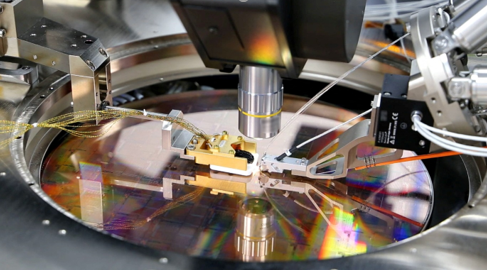
April 26 (Reuters) - Computers using light rather than electric currents for processing, only years ago seen as research projects, are gaining traction, and startups that have solved the engineering challenge of using photons in chips are getting big funding.
In the latest example, Ayar Labs, a startup developing this technology called silicon photonics, said it had raised $130 million from investors, including chip giant Nvidia Corp (NVDA.O).
While the transistor-based silicon chip has increased computing power exponentially over the past decades as transistors have reached the width of several atoms, shrinking them further is challenging. Not only is it hard to make something so minuscule, but as they get smaller, signals can bleed between them.
So, Moore’s law, which said every two years, the density of the transistors on a chip would double and bring down costs, is slowing, pushing the industry to seek new solutions to handle increasingly heavy artificial intelligence computing needs.
According to data firm PitchBook, silicon photonics startups raised over $750 million last year, doubling from 2020. In 2016 that was about $18 million.
“A.I. is growing like crazy and taking over large data center parts,” Ayar Labs CEO Charles Wuischpard told Reuters. “The data movement challenge and energy consumption in that data movement is a big issue.”
The challenge is that many large machine-learning algorithms can use hundreds or thousands of chips for computing. Using current electrical methods, there is a bottleneck in data transmission speed between chips or servers.
Light has been used to transmit data through fiber-optic cables, including undersea cables, for decades, but bringing it to the chip level was challenging as devices used for creating light or controlling it have not been as easy to shrink as transistors.
PitchBook’s senior emerging technology analyst Brendan Burke expects silicon photonics to become standard hardware in data centers by 2025 and estimates the market will reach $3 billion by then, similar to the market size of the A.I. graphic chips market in 2020.
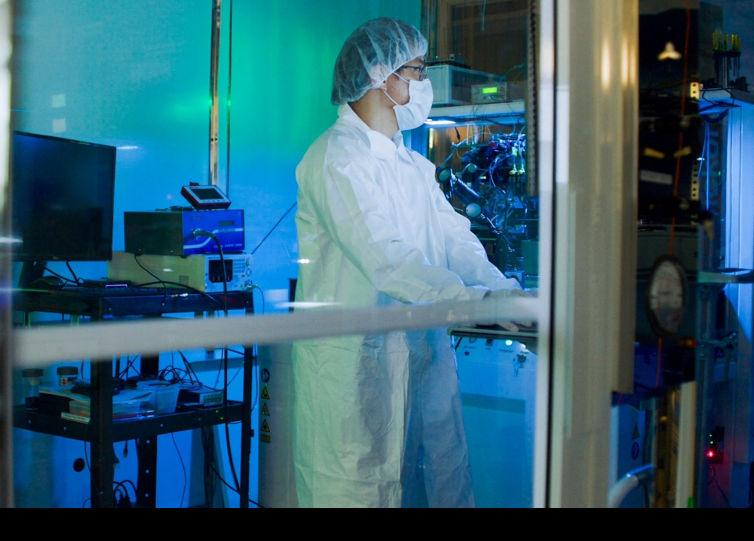
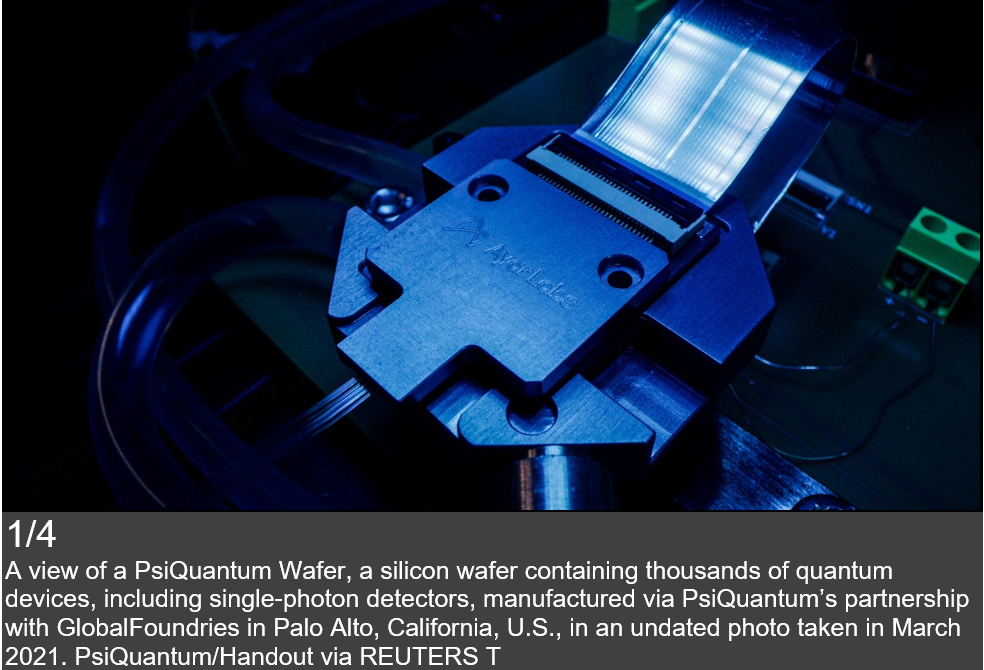
A view of a PsiQuantum Wafer, a silicon wafer containing thousands of quantum devices, including single-photon detectors, manufactured via PsiQuantum’s partnership with GlobalFoundries in Palo Alto, California, U.S., in an undated photo taken in March 2021. PsiQuantum/Handout via REUTERS T
Beyond connecting transistor chips, startups using silicon photonics for building quantum computers, supercomputers, and chips for self-driving vehicles are also raising significant funds.
PsiQuantum has raised about $665 million so far, although the promise of quantum computers changing the world is still years out.
Lightmatter, which builds processors using light to speed up A.I. workloads in the data center, raised $113 million and will release its chips later this year and test with customers soon after.
Luminous computing, a startup building an A.I. supercomputer using silicon photonics backed by Bill Gates, raised $115 million.
It is not just the startups pushing this technology forward. Semiconductor manufacturers are also gearing up to use their silicon chip-making technology for photonics.
GlobalFoundries Head of Computing and Wired Infrastructure Amir Faintuch said collaboration with PsiQuantum, Ayar, and Lightmatter has helped build up a silicon photonics manufacturing platform for others to use. The platform was launched in March.
Peter Barrett, founder of venture capital firm Playground Global, an investor in Ayar Labs and PsiQuantum, believes in the long-term prospects for silicon photonics for speeding up computing but says it is a long road ahead.
“What the Ayar Labs guys do so well ... is they solved the data interconnect problem for traditional high-performance (computing),” he said. “But it’s going to be a while before we have pure digital photonic compute for non-quantum systems.”
To read the complete article, go to: https://www.reuters.com/technology/chip-startups-using-light-instead-wires-gaining-speed-investments-2022-04-26/
In TRIZ, this is a new “S-curve” and evolution in computer chip development. The replacement of transistor-based silicon chips with silicon photonics. The challenge of making silicon chips smaller and smaller has given way to a new technology using light instead of electricity. This evolution of the technology will allow for increased speed and a smaller size of new systems.
Scientists developed transparent solar cells that can be used in windows and last for 30 years
Generating electricity outside cities and transporting it into the city comes with much power loss. Ideally, as much of it as possible should be generated locally. Scientists have found a way to alleviate this issue by developing a new type of transparent solar cell that can be used in the windows of buildings and is expected to last for 30 years.

file:///C:/Users/Owner/AppData/Local/Temp/msohtmlclip1/01/clip_image002.jpg" alt="Tall buildings have a lot of solar energy potential with loads of glass surface - Song_about_summer via Shutterstock / HDR tune by Universal-Sci" width="624" height="416" />
Tall buildings have a lot of solar energy potential with loads of glass surface - Song_about_summer via Shutterstock / HDR tune by Universal-Sci
The need for eco-friendly energy production is increasing at a rapid pace. According to research, solar is one of the cheapest methods to generate electricity. A problem with solar power stations is that they take up a lot of space, and while cities generally need the most electricity, they have the least amount of space for power inside cities.
While silicon is still the most efficient material for solar panels, it is not transparent. Researchers at the University of Michigan, North Carolina State University, Tianjin University, and Zhejiang University have looked into organic or carbon-based materials for window-friendly solar panels. They published their work in the science journal: Nature Communications
The main challenge was to keep highly efficient organic light-converting materials from rapidly deteriorating when used. The resilience of these materials is derived from the molecules that move photogenerated electrons to the electrodes. These materials are called "non-fullerene acceptors" to distinguish them from the more sturdy but less efficient "fullerene acceptors" created from nanoscale carbon mesh. Solar cells made with non-fullerene acceptors that incorporate sulfur can reach efficiencies of 18% (an efficiency level that rivals silicon). Still, the problem is that they have a very short lifespan.
Yongxi Li, the first author of the study, explains that non-fullerene acceptors cause very high efficiency but incorporate weak bonds that easily separate under high-energy photons, especially with ultraviolet photons found in sunlight.
After examining the nature of the non-fullerene acceptor deterioration, the researchers discovered that the exposed solar cells only needed reinforcements in a few spots. Firstly, ultraviolet rays would have to be blocked off. To do so, the team added a coating of zinc oxide, a popular sunscreen component on the side of the glass that faces the sun.
A thinner zinc oxide layer next to the light-absorbing area improves the conduct of solar-generated electrons to the electrode. Sadly, this also tears down the fragile light absorber. The researchers added a layer of a carbon-based material called IC-SAM as a buffer to solve this issue.
On top of that, the electrode that draws positively charged "holes" into the circuit (essentially spaces abandoned by electrons) can react with the light absorber. So to protect that flank, the team added another buffer layer in the form of a fullerene shaped like a soccer ball. (A fullerene is an allotrope of carbon whose molecule consists of carbon atoms joined by single and double bonds to form a closed mesh, with fused rings of five to seven atoms.)
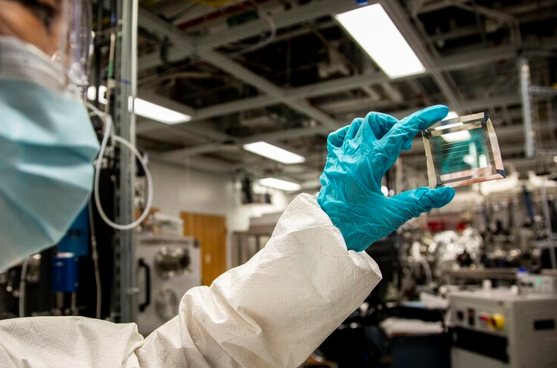
file:///C:/Users/Owner/AppData/Local/Temp/msohtmlclip1/01/clip_image004.jpg" alt="One of the researchers holding a solar cell module with 40% transparency, based on the new design with an estimated life expectancy of 30 years - (Image Credit: Robert Coelius, University of Michigan Engineering)" width="566" height="377" />
The researchers then put their new reinforcements to the test under various intensities of simulated sunshine, ranging from 1 sun to 27 suns, and temperatures as high as 65 degrees celsius. They projected that the solar cells would still be functioning at 80% efficiency after 30 years based on how performance declined under these conditions.
One of the researchers holding a solar cell module with 40% transparency, based on the new design with an estimated life expectancy of 30 years - (Image Credit: Robert Coelius, University of Michigan Engineering)
After examining the nature of the non-fullerene acceptor deterioration, the researchers discovered that the exposed solar cells only needed reinforcements in a few spots. Firstly, ultraviolet rays would have to be blocked off. To do so, the team added a coating of zinc oxide, a popular sunscreen component on the side of the glass that faces the sun.
A thinner zinc oxide layer next to the light-absorbing area improves the conduct of solar-generated electrons to the electrode. Sadly, this also tears down the fragile light absorber. The researchers added a layer of a carbon-based material called IC-SAM as a buffer to solve this issue.
On top of that, the electrode that draws positively charged "holes" into the circuit (essentially spaces abandoned by electrons) can react with the light absorber. So to protect that flank, the team added another buffer layer in the form of a fullerene shaped like a soccer ball. (A fullerene is an allotrope of carbon whose molecule consists of carbon atoms joined by single and double bonds to form a closed mesh, with fused rings of five to seven atoms.)
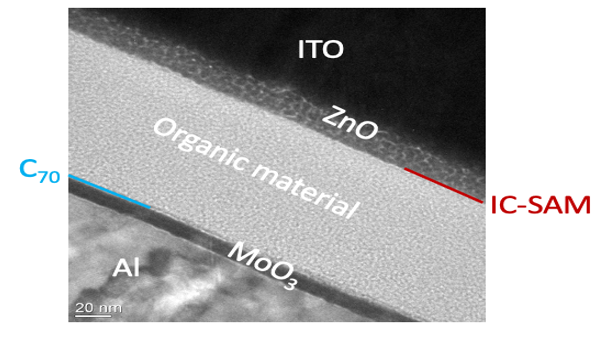
file:///C:/Users/Owner/AppData/Local/Temp/msohtmlclip1/01/clip_image006.png" alt="An extreme close-up of a cross-sectional slice of an OPV with the added layers of material (IC-SAM and C70) between the organic material and the external buffers. After the material was subjected to high-intensity light to replicate an estimated age of 30 years. It reveals an intact organic active region with no breakdown at the edges. (Image Credit: Kan Ding, University of Michigan)" width="604" height="328" />
The slide shows an extreme close-up of a cross-sectional slice of an OPV with the added layers of material (IC-SAM and C70) between the organic material and the external buffers. After the material was subjected to high-intensity light to replicate an estimated age of 30 years, it revealed an entire organic active region with no breakdown at the edges. (Image Credit: Kan Ding, University of Michigan)
Because the materials can be prepared as liquids, the manufacturing costs are expected to be relatively low, increasing the feasibility for wide-scale use. All in all, we are yet another step closer to actual solar power-generating windows with these findings.
Idealized Supply Chain Design: Towards Ideality
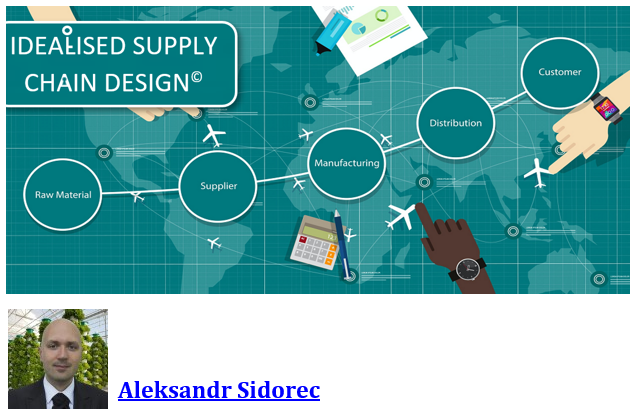
Igniting Food Systems Revolution | Industry 4.0 Partner @ Cognizant
Five years ago, I came across an OODA loop model (observe-orient-decide-act) developed in the 1960ies by military strategist Air Force Colonel John Boyd to support fighter pilots and their decision-making tasks on the battlefield. Indeed, you might draw parallels with some modern frameworks, but this is not an objective here. What impressed me is his serious approach to assessing implications triggered by the second law of thermodynamics and its further impact on military strategy.
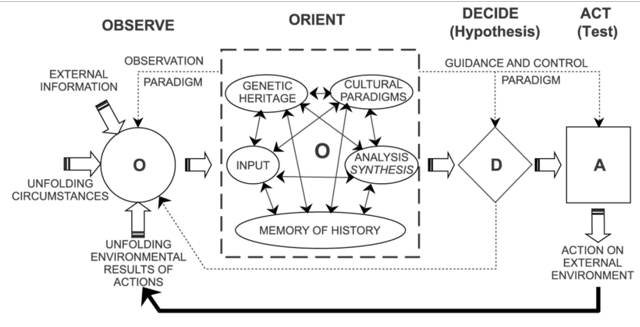
Boyd’s definition of the law was much more “user friendly” than the versions we usually find in the works of Kelvin, Plank, and others. He stated that:
“… entropy of any closed system always tends to increase and thus the nature of any given system continuously changes even as efforts are directed toward maintaining it in its original form.”
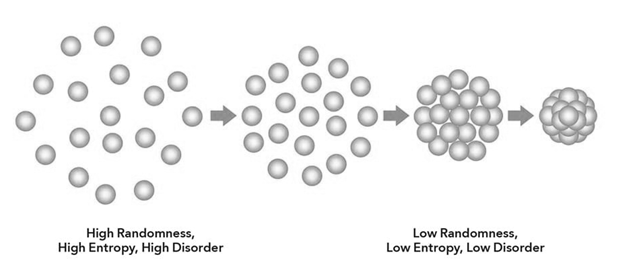
That was an exciting insight that stimulated my further thinking in the supply chain domain. Despite all efforts that we put in to control the flows, the environment continuously brings us even more challenging conditions. We try to impose even more control and organization over it. But how successfully?
I have not continued massaging this mental model too long, as my attention slipped to another point that this law highlights. Any organized system will continuously tend towards the increasing levels of entropy, at the same time, it always aims at minimizing its energy state. Well, the more we want to organize and control the system, the more energy we will spend on it, yes?
While incubating those cosmic thoughts, I felt like Don Quixote fighting with windmills in real life. The nature of supply chain challenges I had to orchestrate with my global team felt like solving fundamental contradictions rather than trade-offs that we historically managed across many industries. I had to build operating models that were both agile and lean, deliver superior service to the markets while meeting aggressive cost-cutting goals, activating efficiencies, and increasing the level of customized solutions. Contradictions.

How can we orchestrate supply chain contradictions? During my next jump into a mental rabbit hole, this is the question I was researching. One online statement captured my attention: “…every technical system aims to reach its maximum state of ideality — function is performed (or need is fulfilled), but there is no system”.
That made sense considering conclusions from the second law of thermodynamics and minimization of energy consumption made me pause. From that moment, my introduction with Genrich Altshuller started (founder of TRIZ) that later led to the definition of Idealized Supply Chain Design principles inspired by pieces of training and work of TRIZ Master Valery Souchkov.
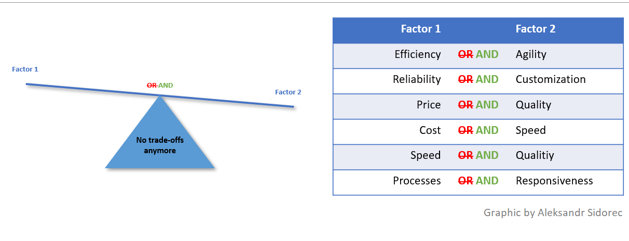
Let me first give you an initial overview of TRIZ itself.
TRIZ (translates from Russian as Theory of Inventive Problem Solving) had its starting point back in 1946 when Soviet inventor Genrich Altshuller and his colleagues ran research with thousands of patents. They discovered and coded specific patterns of technical systems’ evolution.
The main message is that evolution of a technical system is not a random process but is driven by specific regularities and has consistent patterns. These patterns can be used to consciously develop a system along its path of technical evolution and get to the breakthrough innovation by solving very complex problems in engineering. By that time, Altshuller and his students came with a definition of “contradictions” and developed frameworks that are helping to solve issues on the lowest levels of any technical system. Today technical TRIZ is actively applied in such companies as Samsung, Philips, LG Electronics, and many other names from the Fortune 500 list.
Since the 2000s, TRIZ had another evolutionary boost by actively expanding its application in other non-technical domains thanks to the passion and the drive of a tiny and dedicated group of professionals: in education, business, and software engineering. My kids are an excellent example as they participate in several training platforms that utilize TRIZ educational methods to bolster children’s creativity and systematic problem solving.
Let’s get to the basics now…
One of the core principles we will work with is the system’s ideality. As supply chains are engineered systems, those are architected to perform several functions. Based on the principle of ideality:
a perfect supply chain performs all the functions it was designed for without using any resources or creating any harm to itself, people, its product, the environment, or society.
In other terms: the consumer receives the product, but there is no supply chain behind it.
Any change in the supply chain that improves the performance of its designed functions or reduces the number of resources or the degree of harmful effects and waste will advance it towards ideality. Such a mental model is critical when we zoom out to the level of strategic planning and business / operating model architecture.
It is essential to note the focus is on the function and not the supply chain itself.
The operating model of the supply chain can be changed from the ground up as long as the new model meets its intended goals.
For instance, if we want to deliver a specific product to a consumer, we have several models at our disposal, each of which applies different operating principles:
‣ Product is packed and delivered by the courier to the consumer’s door
‣ Pack is picked by an autonomous vehicle and delivered to the destination
‣ Consumer downloads CAD technical drawing and prints the product at home
The delivery of the goods will be considered ideal when: the product appears in the right place, at the right time, and in the correct quantity without requiring any logistical system to get it to the consumer. Science Fiction? Not necessarily.
The objective of such a model is not to create a Space conquest strategy for the Supply Chain Management domain (although you might certainly discuss this idea with Elon Musk as he will need Space Logistics experts soon). Rather than move us outside of psychological inertia when we are trying to solve problems across the value chain in the same way others do. This barrier to innovation becomes even more critical when we intend to redesign the whole operating model of the enterprise to activate new levels of competitive advantage.
What often happens? We have a hammer, and we see the nails everywhere. As a result, we tend to solve problems or implement solutions based on predefined templates of models and behaviors instead of creating tailored and unique system structures relevant only to you, your company, and the particular context of the business.
Why is this important within the strategic layer of the supply chain model? Because technology becomes quickly obsolete and is becoming quickly commoditized, causing the problem that it is hard to build a competitive strategy just on this. Exciting potential lies in an intelligent blending of different elements to activate new capabilities and functions.
The best way to represent such a level of ideality through the simple formula that I have adopted from the works of Valery Souchkov:
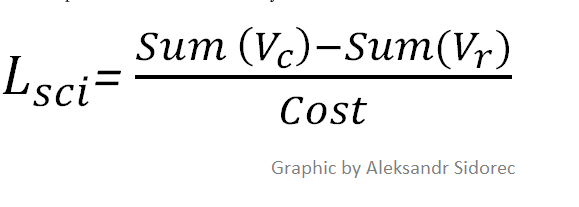
Li = Level of Supply Chain ideality
Vc = Value-creating factors (e.g., speed, flexibility, consumer satisfaction, etc.)
Vd = Value reducing factors (e.g., waste, environmental impact, long lead times, etc.)
Cost = all the costs associated with running and executing such a supply chain
The formula clearly states where our focus should be.
When discussing the topic of ideality, it is worth considering some of the trends related to the evolution of the technical system.
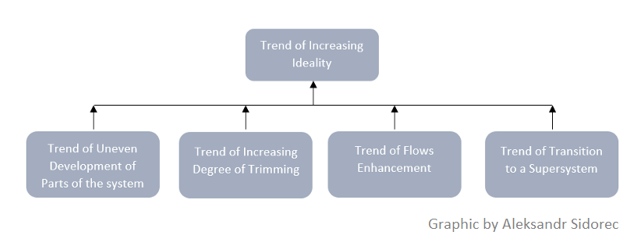
I have listed just a few examples that boost the state of the supply chain’s ideality. Still, we will have a deeper look into that in later publications considering that this forms an essential foundation when an organization sets an ambition to make a quantum leap in its business performance.
Before we deep dive into the some of those trends in the context of our daily operational realities, I should clarify some relevant definitions related to:
‣ Trimming
‣ Supersystem
Trimming in the supply chain. When applying the trimming process, we look for ways to reduce (to trim) some of the components involved in a specific supply chain activity. Their functions are redistributed amongst other (existing or improved) components. This process might lead to better operational costs, safety, and processing speed.
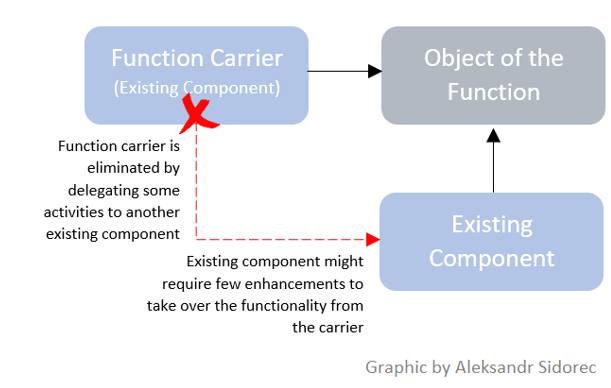
Let’s assume that based on functional analysis (analogue of process analysis/value stream mapping), we have identified a set of activities that are performed within a specific part of the supply chain. For example, and to provoke some out-of-box thinking, let’s look at the case of international container shipments causing many challenges today due to global imbalance on the freight markets.
The Core Elements of the ocean freight flow are the following:
Vessel — Container — Product
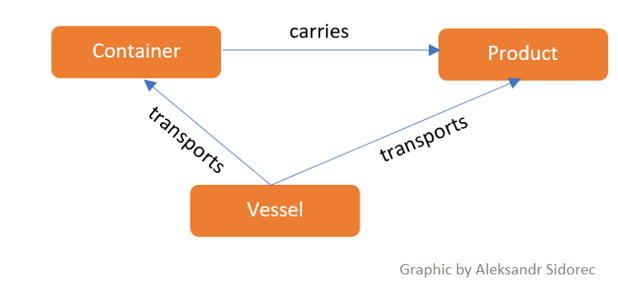
We know that a vessel’s availability is one of the factors currently causing adverse effects within our supply chain system. So, let’s take it out of the equation and delegate the transportation function to the container. So, the new system would be something like this:

Imagine the ocean full of self-sailing and navigating containers using electro-drive powered by solar energy.
Trimming is a powerful standalone tool that can help reduce costs across the value chain and should be used as collaborative work between procurement and technical functions. I will publish different material on this subject.
Supersystem of the supply chain. The supersystem is one of the core elements of the Idealised Supply Chain Design framework. The main point here is that the supply chain is not an isolated activity but a part of the specific supersystem that the company operates in.
Here I am going to extend the work of Valery Souchkov. He made a deep analysis of the supersystem within TRIZ by defining the key elements of the supersystem’s completeness:
‣ Supersystem as a source of resources for a supply chain system
‣ Supersystem as a driver of lifecycle within a supply chain system
‣ Supersystem as a means of control within a supply chain system
‣ Supersystem as a source of a target for a supply chain systems existence
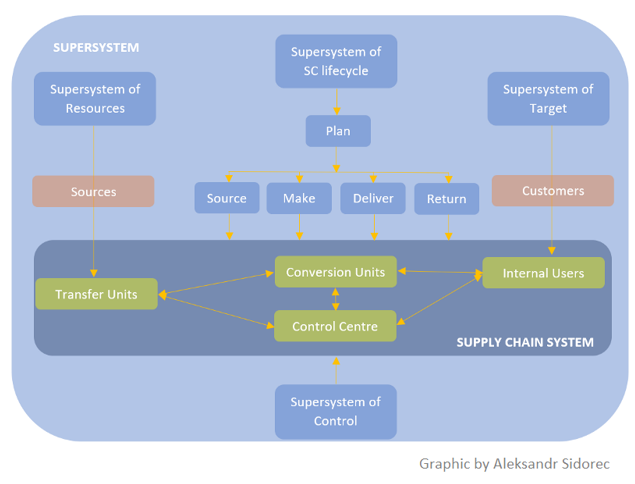
We can certainly draw a parallel between the supersystem and business ecosystem, which would be correct to a certain extent, considering there are elements mutually shared between both structures. In this context, a more correct view would be that the business ecosystem represents a sum of several supersystems that share common targets and objectives.
Now, here are some key elements related to our Supersystem:
🅐 Supersystem provides Resources necessary for Supply Chain System to execute its function and target. For example, it is possible to execute its function thanks to accessing the Sources = Vendors who are forming a critical part of the supersystem
🅑 Supersystem provides the Lifecycle of Supply Chain System, meaning that it provides everything necessary to ensure that various execution stages can be performed within the system. A minimum number of subsystems are available within a Supersystem to ensure that planning, sourcing, production, delivery, and returns can be executed. For example, in the case of Deliver stage, Supersystem provides an infrastructure (e.g., roads) that enables the execution of logistical function within the supply chain
🅒 Supersystem provides Control over the Supply Chain System that is activated thanks to the minimal number of subsystems within the Supersystem itself. For example, the driver operates the forklift in the warehouse, but the Warehouse Management System is used to guide the picking locations
🅓 Supersystem as a source of Supply Chain Systems Target provides a minimal number of subsystems necessary to ensure that the system effectively executes its primary purpose and function. For example, Supersystem provides the customers or consumers who have specific expectations related to the final product of such a system. Otherwise, the system would be supplying the goods to the markets that do not exist (previously I would joke regarding the supply of refrigerators to the North Pole, but with all the environmental challenges and temperature changes past 5 years, this might become a new reality)
Now we come to the Supply Chain System itself. It has a minimal viable structure (MVS) that usually includes Transfer Units, Conversion Units, Control Centre, and Internal Users. But in order not to overload this publication, I will skip details at this stage.
Let’s return to our conversation about the technical systems trends and their applicability within the supply chain domain.
Most interesting is that by combining the knowledge about such trends with S-curve analysis, we are well-positioned to forecast several scenarios about supply chain systems’ further development in the context of specific business activity. This knowledge gives us the means to design a long-term transformation roadmap for a specific operating model and its subsystems. But this should be performed in combination with trends of consumer behaviors evolution that we will analyze in another upcoming publication.
Why is this important? Idealized Supply Chain Design operates across several layers, each with its own set of tools and toolkits that could be applied to solve strategic, resource-based, and operational challenges within the supply chain.
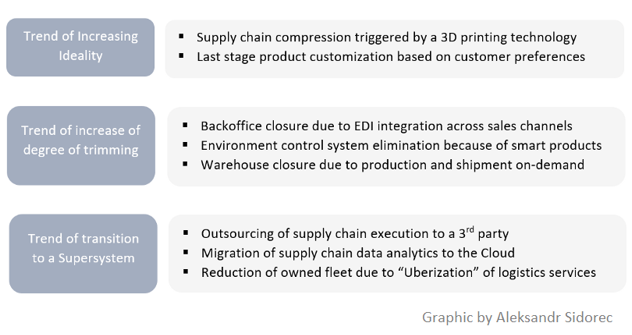
This information means that we will need to work from a strategic level. We are having a systematic look at the supply chain as a whole, including analyzing its subsystems and the current state of the supersystem. We do not want supply chain engineers and architects to implement the changes across the business value chain so that no supersystem can support this.
We do not need to go far away, for examples. We already have hydrogen-powered engines and cars available, but there is a lack of access to the fuel itself. Another example is when you develop automated warehouses for inbound cargo handling. Still, your supply base is not ready to adopt because of new palletization requirements so that you can have smooth warehousing operations and a low level of exceptions handling.
We move into resource management from the strategic level blended with processes and flows. Those are the layers where we usually start facing first contradictions that will not accept simple trade-offs but require a disciplined and structured work of resolving them. And that is where the miracle of idealized supply chain design begins.
This publication contains an introductory overview to give the reader a high-level understanding of some essential principles related to the Idealised Supply Chain Design. The following article will provide insights about the “soft” elements of the discipline — psychological inertia and role of abstractions, why those are important and relevant for supply chain practitioners.
Stay tuned. More to be published on the topic…
About the Author: Aleksandr is Advisory Partner Industry 4.0 @ Cognizant. He is on a mission of supporting clients across AgriFood, FMCG, and Retail sectors to accelerate value chain transformation boosted by the Internet of Things (IoT) and intelligent data leverage. Previously he spent 18 years shaping operational capabilities for the Fortune 500 companies: Olam International, Holcim, Johnson & Johnson, Caterpillar / Zeppelin, and Procter & Gamble.
He blends his professional activity with a personal exploration of startup ecosystems combined with research related to Lean Six Sigma, Inventive Problem Solving (TRIZ), and Systems Engineering to activate solutions for the most challenging issues across the supply chain domain.
More information: www.sidorec.com
Idealized Supply Chain Design (ISCD) by Aleksandr Sidorec is licensed under a Creative Commons Attribution-NonCommercial-NoDerivatives 4.0 International License
OUR CONSCIOUS AND SUBCONSCIOUS MINDS: A POWERFUL DUO By Stuart G. Walesh
This article explores the idea that professionals will be even more innovative if they proactively use their complementary conscious and subconscious minds. It begins by describing our two minds with emphasis on how they work. The article introduces the double-diamond process as a way of thoroughly defining and then solving a problem. It discusses tools available for taking a whole-brain approach -- left and right hemisphere and conscious and subconscious mind -- to innovative problem solving. The article concludes by offering ideas on why some tools work well, especially in more fully engaging our complementary conscious and subconscious minds.
This article presents the basics of our brain’s conscious and subconscious thinking processes and asserts that knowledge enables us to be even more innovative. We often hear about our brain’s very different left and right halves or hemispheres and benefit from that information. In contrast, we seem to be less conscious of our conscious and subconscious thinking. Let’s rectify that imbalance so that we are prepared to engage in what I call whole-brain thinking (Walesh 2017) -- intentional and effective use of our left and right hemispheres and conscious and subconscious minds.
I use the word subconscious to refer to brain processes that lie below what professor Rollo May (1976) calls our “level of awareness.” Other terms for the subconscious are unconscious and preconscious.
We are very aware of the capabilities of our conscious mind. It explicitly drives our work and other lives. My hope is that you will, because of reading this article about conscious and subconscious thinking, more proactively engage your subconscious mind.
As explained by neuropsychologist Paul D. Nussbaum (2010), we can think of the brain divided into ‘top-down’ orientation, with the cortex at the top and the subcortex at the bottom as suggested here:
Nussbaum says that the cortex “is a convoluted mass of cells, with folds and flaps that sits snug within your skull.” He explains that “the cortex is primarily responsible for the most complex thinking abilities, including memory, language, planning, concept formation, problem solving, spatial representation, auditory and visual processing, mood, and personality.” Cortex processing is conscious; it is intentional.
Positioned beneath the cortex, the more primitive subcortex “primarily processes rote skills and procedures” with most of the processing being subconscious (Nussbaum 2010). Examples of subconscious activities are word processing, tying your shoes, and driving -- things we do habitually. The cortex and subcortex connect in many ways and work very effectively together.
Scientists share widespread agreement about the existence of conscious and subconscious cognitive processes but the precise location of the processes is somewhat uncertain. For example, while Clayman (1991) and Mlodinow (2013) generally support Nussbaum’s cortex - subcortex model, biologist and researcher John Medina (2008) says, “We don’t know the neural location of consciousness, loosely defined as that part of the mind where awareness resides.” Nussbaum (2014) says there is “no real conflict” because “the brain does work in harmony, yet it can also maintain regional specialization.”
Psychiatrist Scott Peck (1997) says, “The conscious mind [drawing on information from our senses and memory] makes decisions and translates them into actions.” As an example of using your conscious mind, you define a problem, develop alternative solutions, compare them, select one, and recommend it. You are aware of the cognitive processing required for that process. With our conscious mind, we are thinking and we know it.
In contrast, the cognitive processing in the subconscious mind occurs without our being aware of it. “The [subconscious] mind resides below the surface;” according to Peck, “it is the possessor of extraordinary knowledge that we aren’t naturally aware of.” In the case of our subconscious mind, we are thinking and we don’t know it. During that conscious problem-solving process described in the previous paragraph, we can be certain that the subconscious mind is influencing, unbeknownst to us, the process.
One indication of the functioning of your subconscious mind: That great idea that “pops into your head” or “comes out of the blue.” The subconscious mind, if we can more effectively use it, has great potential as suggested by writer and anthropologist Martha Lagace (2012) who said “Our conscious mind is pretty good at following rules, but our unconscious mind -- our ability to think without attention -- can handle a larger amount of information. Studying the unconscious mind offers exciting new avenues for research, including creativity, decision making, and sleep.”
Considering further the relative impact on us of our conscious and subconscious minds, neuroscientist David Eagleman (2012) writes “consciousness is the smallest player in the operations of our brain. Our brains run mostly on autopilot.” The biggest player is our subconscious mind, which, as stated by Peck (1997), “resides below the surface.” As illustrated metaphorically in the following figure, conscious cognitive processing is the tip of the iceberg; subconscious cognitive processing is much larger and invisible.
Consider some more metaphors to help understand our conscious and subconscious minds and how they work together in a complementary manner. They also suggest how you can cause them to work even better together (all from scientist and theologian Murphy (2000), except as noted):
The following table further explains major differences between our conscious and subconscious cognitive processing. By leveraging those great differences, that is, by being aware of and linking them, we can enhance, individually and collectively, our innovation.
|
Conscious |
Subconscious |
|
When thinking, we know it |
When thinking, we don’t know it |
|
Intermittent |
24/7 |
|
Linear processor |
Parallel processor |
|
Slow |
Fast |
|
Prefers complete information in order to decide/do |
Can work with pieces |
|
Sees, or thinks it sees, what can be accomplished |
Believes that what is imagined by the conscious mind can be achieved and goes to work on it |
|
Does not control dreams |
Controls dreams |
|
Can change habits |
Source of habits |
Genrich Altshuller recognized the existence and complementary roles of our conscious and subconscious minds. He noticed that “many inventions were made in three steps. First, an inventor intensely and unsuccessfully searches for a solution. Then, having not solved the problem, he stops thinking about it. Some time passes, and suddenly, as if a delayed action mechanism goes off -- ‘as by itself” -- the required solution appears” (Altshuller 1999).
Read more: OUR CONSCIOUS AND SUBCONSCIOUS MINDS: A POWERFUL DUO

December 21, 2021
One of the critical issues with the current trend of bigger and bigger screens found on modern smartphones is that they get more easily damaged due to their size. On top of that, these larger, more complex screens are usually more expensive to replace or repair.
Scientists from Korea might have found a solution for this particular problem as they developed a self-healing material that can self-repair cracks and even restore damaged functions. Image Credit: encierro via Shutterstock / HDR tune by Universal-Sci
Image Credit: encierro via Shutterstock / HDR tune by Universal-Sci
The Korean researchers focused their attention on a material called CPI (colorless polyimide). The use of this material is widespread. It possesses excellent durable properties alongside good tensile strength, making it ideal for application in industries such as the aviation industry. Still, the material is also used in solar cells and flexible screens for foldable devices.
Several efforts have been made to improve the durability of CPI as the potential return on investment is enormous due to the material's large-scale use. Unfortunately, these attempts have, as of yet, not been successful. This makes potential self-healing technology even more relevant.
One of the challenges the research team encountered was that any self-healing technology should not tamper with the beneficial properties of colorless polyimide, including its transparency. The scientists opted for a creative solution, using linseed oil obtained from the flax plant seeds, also known as linseed. Linseed fibers are commonly used to make linen, while the researchers are more interested in its seeds. Perhaps there is some potential for synergy there. Oil extracted from flax seeds is quickly hardened and ideal to use as a coating material.
Using the flax oil, the team constructed oil-loaded microcapsules, with which they built the topmost healing layer by mixing them with silicone. When damage occurs, these microcapsules are supposed to break, leaking the flax oil filling the cracks, which quickly hardens, effectively restoring the screen. A considerable benefit derived from the mixed oil's liquid properties is that it naturally finds its way to the damaged area, repairing any local blemishes. ile:///C:/Users/Owner/AppData/Local/Temp/msohtmlclip1/01/clip_image005.jpg" alt="The self healing layer is flexible, twistable, bendable and foldable - Image Credit: Korea Institute of Science and Technology( KIST)" width="624" height="380" />
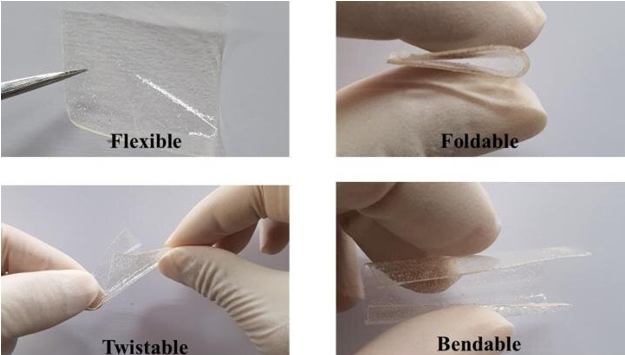
The self-healing layer is flexible, twistable, bendable, and foldable - Image Credit: Korea Institute of Science and Technology( KIST)
Another advantage of this semi-liquid solution is that it is usable on hard materials such as smartphone screens. Current self-repairing technology can only be applied to soft materials. The idea here is that the soft material melts by applying heat, smoothing out scratches and other marks. The microcapsule material renders an additional liquid layer on top of hard materials; this layer only becomes liquid when damaged. It can do so at room temperature without any additional heat requirements. It quickly hardens after it is exposed, making the surface hard again. The healing process can be performed within only 20 minutes as the material interacts with UV light. Simple but ingenious.

Robotic Fish Tail and Elegant 
Math Could Inspire Underwater Drones
Engineers uncovered the secrets of highly efficient swimming at varying speeds.

Picture by iStock
Underwater vehicles are typically designed for one cruise speed, and they’re often inefficient at other speeds. The technology is rudimentary compared to the way fish swim well, fast or slow.
What if you want your underwater vehicle to travel fast through miles of ocean, then slow down to map a narrow coral reef, or speed to the site of an oil spill then throttle back to take careful measurements?
Dan Quinn, an assistant professor at the University of Virginia School of Engineering and Applied Science, and his colleague, recent UVA Ph.D. graduate and postdoctoral researcher Qiang Zhong, discovered a key strategy for enabling these kinds of multispeed missions. They have demonstrated a simple way to implement this strategy into robots, ultimately transforming underwater vehicle design. Their work was recently published in Science Robotics.
When designing swimming robots, a question that keeps coming up for researchers is how stiff the piece that propels the robots through the water should be made? It’s tricky because the same stiffness that works well in some situations can fail miserably in others.
Read more: Robotic Fish Tail and Elegant Math Could Inspire Underwater Drones
Solving complex problems with even more complex solutions is a guarantee for even more problems.
 by Arno Koch
by Arno Koch
JUN 22, 2021
Now that even my fridge has to be "smart" and a simple sensor is called "4.0," I wonder. Does everyone have the same idea about the definition of Industry 4.0, and how far are we now really in this process? And what is 4.0 really about? I like to distinguish fact from fiction, and here are my conclusions.
Henry Ford created flow production, which allowed large quantities of the same product to be produced at affordable costs. He described this in several (still very readable) books. On the other side of the world, after World War II, these books were closely studied by one of his competitors: Toyota.
Toyota, originally a machine builder of looms, implemented Ford's principles in detail. However, there were two differences:
1. Whereas in the U.S., everything was abundant, on the Japanese island, with hardly any natural resources, scarcity of everything has traditionally prevailed, giving rise to an incredible focus on eliminating waste.
2. The Japanese have learned that only by working in close harmony with their environment and cooperating with the people around them can they produce enough to survive together.
These two characteristics were precisely decisive in the Toyota Production System: By working together in the constant struggle against losses, the famous TPS was developed after World War II during a phase of deadly liquidity problems.
Read more: Why '4.0' Is Often 3.0, and Smart Is Not Always Intelligent
World's first graphene-enhanced

concrete slab poured in England
By Nick Lavars May 25, 2021
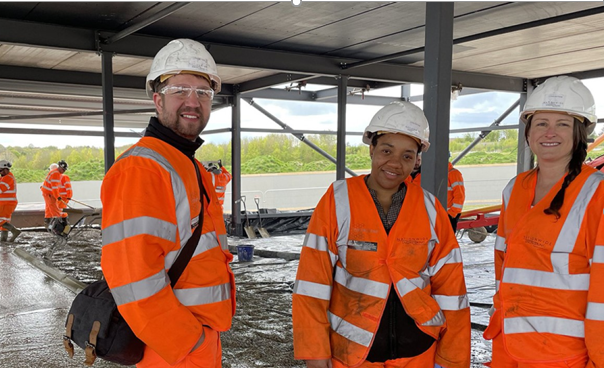
University of Manchester researchers Craig Dawson, Happiness Ijije and Lisa Scullion onsite as workers tend to the world's first graphene-enhanced concrete slab in the background.
University of Manchester/Nationwide Engineering
As the mostly widely used material on Earth, concrete has a massive carbon footprint that scientists are working to chip away at in all sorts of ways. Recent research projects have demonstrated how the wonder material graphene could play a role in this and now we are seeing the first real-world deployment of the technology, with engineers using so-called "Concretene" to form the foundations of a new gym in the UK.
As the world's strongest artificial material, graphene may have a lot to offer the world of construction, among its many other potential uses. Scientists have previously found success incorporating it into the concrete manufacturing process to make the finished product stronger and more water-resistant, while one research project even demonstrated how this graphene can be recovered from old tires.
Read more: World's first graphene-enhanced concrete slab poured in England (2)
World's first graphene-enhanced

concrete slab poured in England
By Nick Lavars May 25, 2021

University of Manchester researchers Craig Dawson, Happiness Ijije and Lisa Scullion onsite as workers tend to the world's first graphene-enhanced concrete slab in the background.
University of Manchester/Nationwide Engineering
As the mostly widely used material on Earth, concrete has a massive carbon footprint that scientists are working to chip away at in all sorts of ways. Recent research projects have demonstrated how the wonder material graphene could play a role in this and now we are seeing the first real-world deployment of the technology, with engineers using so-called "Concretene" to form the foundations of a new gym in the UK.
As the world's strongest artificial material, graphene may have a lot to offer the world of construction, among its many other potential uses. Scientists have previously found success incorporating it into the concrete manufacturing process to make the finished product stronger and more water-resistant, while one research project even demonstrated how this graphene can be recovered from old tires.
Read more: World's first graphene-enhanced concrete slab poured in England